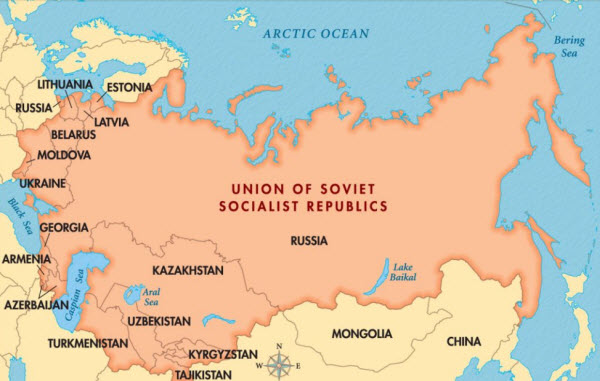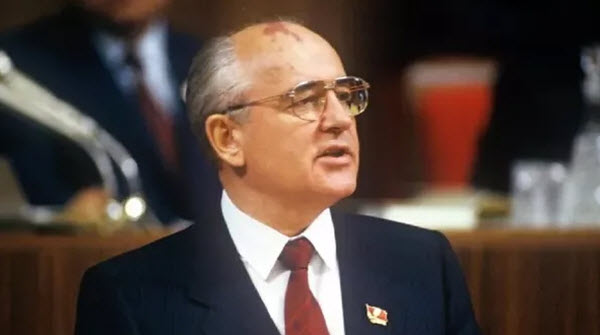The Soviet Union, once a colossal superpower and expansive empire, stretched from the Baltic and Black Seas in the west to the Pacific Ocean in the east. Comprising 15 socialist republics with Moscow as its capital, the USSR was, at its height, the largest country in the world by land area, covering nearly one-sixth of the Earth’s surface. It was also one of the most ethnically diverse nations, home to over 100 distinct nationalities within its borders. Despite this diversity, the majority of its population was composed of Eastern Slavs (Russians, Ukrainians, and Belarusians), who together made up more than two-thirds of the total population by the late 1980s. Between 1946 and 1991, the Soviet Union covered an area seven times the size of India and two and a half times the size of the United States. This vast expanse and the ideological divide between communism and capitalism defined the Cold War era, leading to a period of intense geopolitical rivalry with the United States. The Cold War eventually culminated in the dissolution of the USSR, replaced by the Russian Federation.
1. Formation and Structure of the Soviet Union
1.1 The Soviet Republics
The Soviet Union was composed of 15 republics: Armenia, Azerbaijan, Belarus, Estonia, Georgia, Kazakhstan, Kyrgyzstan, Latvia, Lithuania, Moldova, Russia, Tajikistan, Turkmenistan, Ukraine, and Uzbekistan. Its territory spanned over 11 of the world’s 24 time zones, extending from the Baltic Sea near Kaliningrad in the west to Cape Dezhnev on the Bering Strait in the east. North to south, it stretched 4,500 kilometers from Cape Chelyuskin to Kushka on the Afghan border. The USSR boasted the world’s longest coastline and borders, touching the Arctic Ocean to the north, the Pacific Ocean to the east, and neighboring several countries including North Korea, Mongolia, China, Afghanistan, Iran, and Turkey. It bordered three seas: the Caspian Sea, the largest inland sea, the Black Sea, and the nearly enclosed Azov Sea. Western boundaries were shared with Romania, Hungary, Czechoslovakia, Poland, Finland, and Norway.

1.2 Legacy of the Russian Empire
The Soviet Union emerged from the ashes of the Russian Empire following the 1917 revolution. Four foundational socialist republics were established on the former imperial territory: the Russian Soviet Federative Socialist Republic (RSFSR), the Transcaucasian Soviet Federative Socialist Republic, and the Ukrainian and Belarusian Soviet Socialist Republics. On December 30, 1922, these republics formalized the Union of Soviet Socialist Republics, later incorporating additional republics such as Turkmenistan and Uzbekistan. Tajikistan joined in 1924, Kazakhstan and Kyrgyzstan in 1929, and the Caucasian Republic was dissolved in 1936, with its territory divided among Armenia, Azerbaijan, and Georgia. Moldova, Estonia, Latvia, and Finland’s Karelia joined in 1940, bringing the total to 15 republics. The Soviet system was characterized by a highly centralized, authoritarian political structure, underpinned by a command economy focused on state ownership of production and distribution, driven by a series of five-year plans.
2. Political and Economic Evolution
2.1 The Stalin Era
Joseph Stalin’s rule marked a period of dramatic change. His policies of rapid industrialization and collectivization were intended to modernize the Soviet economy and consolidate agricultural production. While these initiatives resulted in significant industrial growth, they also led to severe human suffering, including famines due to forced collectivization. Stalin’s regime was notorious for its political repression, including the Great Purge, which involved mass arrests and executions.

2.2 Post-War Period
After World War II, the Soviet Union emerged as a global superpower, establishing communist regimes across Eastern Europe and engaging in a prolonged Cold War with the United States. The USSR’s influence extended globally, affecting various regions through political, military, and economic means. The Soviet role in the Allied victory over Nazi Germany and its subsequent expansionist policies were key aspects of its post-war strategy.
2.3 Khrushchev and Reform
Nikita Khrushchev’s tenure saw a departure from Stalinist policies with de-Stalinization and attempts at reform. Khrushchev’s leadership faced challenges, including the Cuban Missile Crisis, which brought the world to the brink of nuclear war. Despite the reforms, Khrushchev’s era was marked by political instability and economic difficulties.

2.4 Brezhnev and Stagnation
Leonid Brezhnev’s period is often associated with stability but also stagnation. The Soviet economy experienced slow growth, and cultural and political life became increasingly conservative. The Soviet invasion of Afghanistan in 1979 strained resources and international relations, further complicating the Brezhnev era.

3. Gorbachev’s Reforms and the Soviet Collapse

3.1 Perestroika and Glasnost
Mikhail Gorbachev, who came to power in 1985, introduced significant reforms aimed at addressing the Soviet Union’s systemic issues. Perestroika (restructuring) aimed to replace the centrally planned economy with elements of a market economy, while glasnost (openness) sought to increase transparency and political freedom. Despite the intentions behind these policies, they led to decreased production in many sectors and increased distribution problems.
3.2 Political Changes
Gorbachev’s political reforms included replacing the old Supreme Soviet with a new Congress of People’s Deputies, which consisted of 2,250 members elected through various means. This body elected a new Supreme Soviet and its chairman, who was to act as the executive head of the USSR. The reforms also led to the establishment of new People’s Deputies Councils in each republic. By 1989, conflicts emerged between the Soviet Union’s central government and the individual republics over power distribution, exacerbated by rising ethnic nationalism and demands for greater autonomy.
3.3 The Failed Coup and Dissolution
In August 1991, a failed coup attempt by hardline communists and the KGB to depose Gorbachev marked a critical turning point. The coup, which sought to restore the old regime, ultimately led to the dissolution of the Communist Party. By December 1991, the Soviet Union ceased to exist. Estonia, Latvia, and Lithuania achieved full independence and were recognized as sovereign states. The remaining republics attempted to negotiate a new union of sovereign states with some level of integration in foreign policy, defense, and economic affairs. However, these negotiations failed, and the republics began to operate as independent states. On December 8, 1991, Russia, Ukraine, and Belarus signed an agreement establishing the Commonwealth of Independent States (CIS), which later included all remaining republics except Georgia. The CIS faced difficulties in achieving unified policies, and the Soviet Union’s dissolution became a reality.
